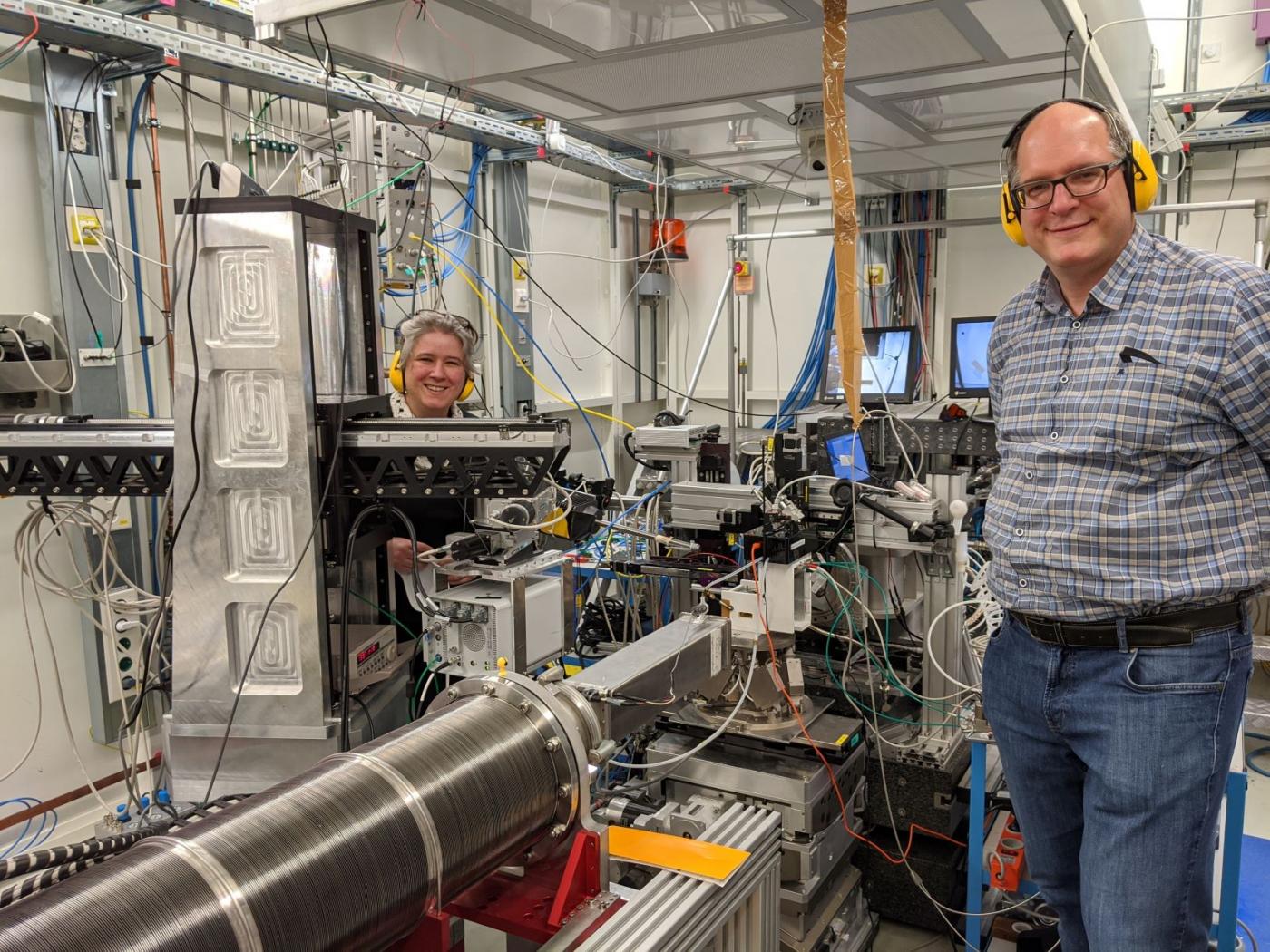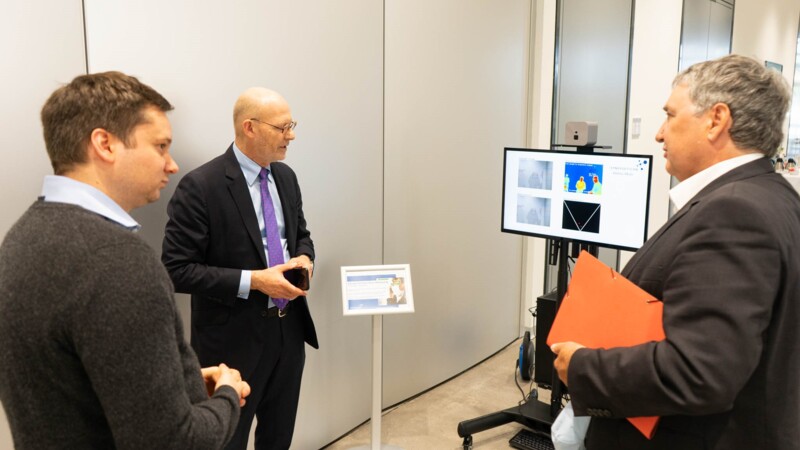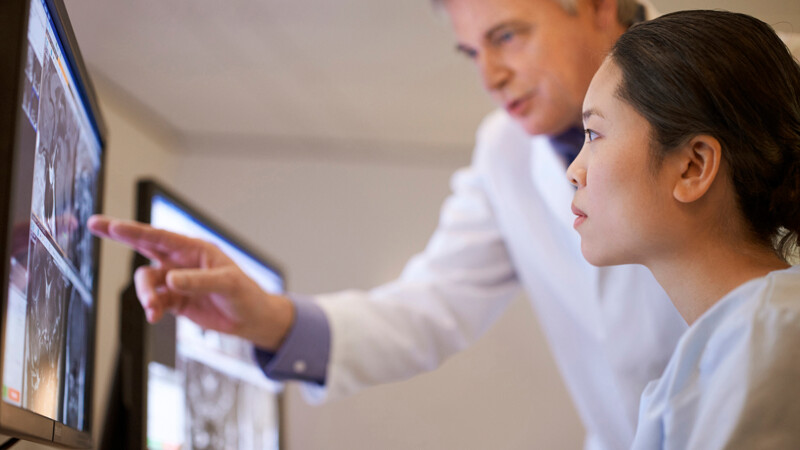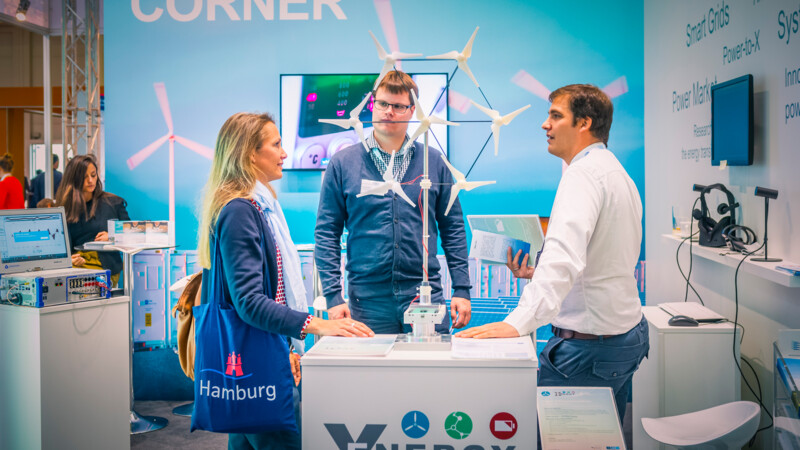Visitors to Simone Techert and Stephan Roth at DESY’s particle accelerator are required to wear heavy, protective headphones in addition to the now ubiquitious masks. Research at the PO3 measuring station can be deafening as foils that create the vacuum in the experimental station can explode with a loud bang
PETRA III microscope based on brilliant X-ray light
PETRA III is the world's most brilliant storage-ring-based X-ray radiation source. Researchers from all over the globe can investigate minute samples there. Scientists requiring tightly collimated and very short-wavelength X-rays for their experiments benefit from its exceptionally high brilliance. Electrons are accelerated almost to the speed of light thanks to undulators – long arrays of magnets that generate X-ray radiation and cause the particles to emit short flashes of light. This results in the brilliant X-ray light making PETRA III ideal for all kinds of applications involving cutting-edge materials, ultra-thin magnetic layers for improved data storage and more efficient solar cells.

Research on molecular level
Techert, who is the leading scientist in DESY’s “Chemical Structural Dynamics” group and a professor of ultra-short pulsed X-rays physics at the University of Göttingen, was researching new types of solar cells when the corona pandemic began spreading. The horrific images from Bergamo in Italy prompted her to change track. "We have to do something, I thought," said Techert, and switched to researching new forms of administering possible corona medication which was facilitated by molecular level research at PETRA III. "Molecules behave according to physical laws regardless of solar cell or medication."
Serious side effects a problem
Techert is backed by Roth, who heads the P03 measuring station at PETRA III and is also a professor at the Royal Institute of Technology in Stockholm. Thirty researchers in Hamburg and Stockholm are now working on the project. Some of the corona medications currently being examined can have serious side effects. "The aim is to administer the active substances in a precise, ideal concentration for the patient and thus reduce the risk of side effects. The means of administering the carrier in the active ingredient is crucial to this process," said Roth.
Combination with ideal carrier medium
PETRA III'a ultra-fine X-ray beam allows the scientists to investigate ways of applying active substances in a controlled, very finely dosed, standard manner to suitable carrier materials - a basic prerequisite for determining the dose. For this purpose, they test the reaction of the different active substances on various carrier media. "We adjust the nanometer-thick carrier material depending on whether an active ingredient goes better with sugar-like materials or with the protein carriers' amino acids," said Techert. "Our goal is to add smart carriers for controlled dosing of a few molecules down to milligrammes," she added.
Next steps towards personalized medicine
At the same time, the team is also investigating how the active ingredients behave when they come into contact with surfaces, i.e. when an active ingredient is not administered by injection or tablet, but is sprayed into e.g. the throat. The aim is to keep side effects to a minimum. "The crystallization of an active ingredient, for instance, due to too high a concentration could weaken the effect and even impair the patient's health," Roth explained.
The research led by Techert and Roth is bringing them ever closer to personalised medicine. "Many people suffering from COVID-19 also suffer from other diseases," said Techert. Therefore, medications such as remdesivir, dexamethasone or ritonavir/opinavir, whose efficacy against COVID-19 is currently being tested, could be combined with other drugs depending on the diagnosis. If a patient has high blood pressure, for instance, the combination could include remdesivir, an ACE inhibitor or beta blocker.
Research at PETRA IV
The scientists hope to make the results of their research available to everyone. "We have opted for 'open access' publications and decided not to set up a start-up," said Techert and Roth, who will continue their long term research. The duo has also hit on ideas for possible medical screening platforms at PETRA IV, which DESY is planning at present. PETRA IV will operate like a high-resolution 3D X-ray microscope for chemical and physical processes and will extend the X-ray views considerably - from the atom to even millimetres. Then, researchers can analyse processes inside a catalyst, a battery or a microchip in realistic operating conditions and tailor materials with nanostructures in a targeted manner. The project is expected to launch in 2026.
ys/pb
Sources and further information
The Deutsches Elektronen-Synchrotron (DESY) counts among the world’s leading particle accelerator centres and investigates the structure and function of matter - from the interaction of minute elementary particles, the behaviour of novel nanomaterials and vital biomolecules to the mysteries of the universe. The particle accelerators and detection instruments that DESY develops and builds in Hamburg and Zeuthen generate the most -powerful X-ray light. Particles have record energies and open up new windows onto the universe.
The world’s largest X-ray laser, European XFEL, was commissioned in 2017. The Innovation Centre "Start-up Labs Bahrenfeld", a joint project by DESY, the University of Hamburg and the City of Hamburg, is being built near the DESY campus presently. DESY is a member of the Helmholtz Association, the largest scientific organization in Germany, and is financed to 90 per cent by the German Ministry of Education and Research and to 10 per cent by the states of Hamburg and Brandenburg.
More
Similar articles



